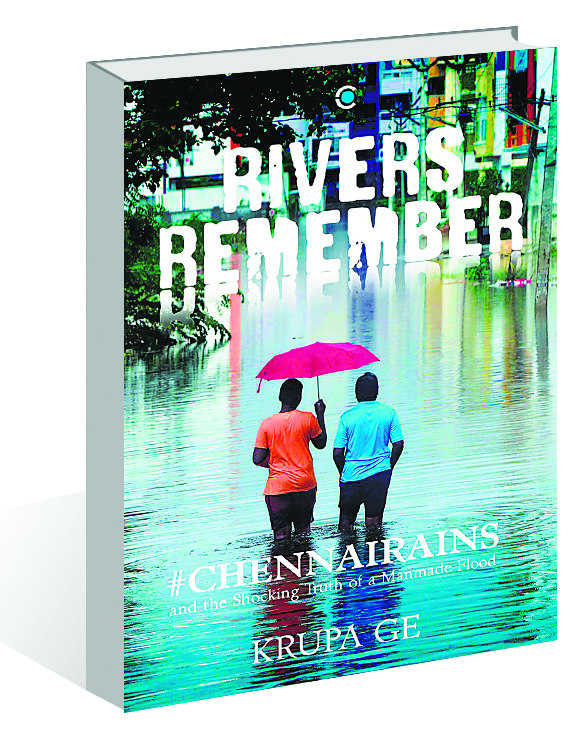
RIVERS REMEMBER #CHENNAIRAINS and the Shocking Truth of a Man-Made Flood by Krupa Ge. Context.
B.R.P. Bhaskar
Mankind has lived through floods in all its history, treating these as natural disasters or divine retribution for some collective sin. Lately there have been attempts, mostly by specialists, to study the causes and consequences of floods. The media’s manner of recording instant history does not allow it to go beyond highlighting the havoc wrought by floods. Krupa Ge’s book, Rivers Remember, is a rare instance of a quick, comprehensive account of a flood of our time, which details what happened and examines its causes.
When it started raining in Chennai one December day in 2015 no one paid much attention to it, viewing it as a delayed spell of the northeast monsoon which has been playing truant in recent years. But that night many had to scramble out and look for refuge elsewhere as waters entered their homes and kept rising. It was the beginning of a nightmare which still haunts those who lived through it.
Krupa Ge, a writer and editor, begins with an engaging, personalised account of the harrowing experiences of her own family and of friends, and supplements it with material drawn from old and new media. The city, which had gone through a severe summer, was pounded by rain — said to be the heaviest in a century. As the authorities released the waters of a reservoir, the normally placid Adyar river which flows through the city, rose rapidly and submerged large parts of the low-lying areas. Filthy water from overflowing sewers also entered homes. With flood waters all around, many people were unable to seek shelter elsewhere and remained trapped in their homes.
The bright side of the dark story of the calamity that hit the city, more particularly the newly developed areas with many apartment buildings, was the way citizens rose to the occasion and helped one another. As lower levels of multi-storeyed buildings were submerged, those living there moved to the higher floors and were warmly welcomed and provided such hospitality as was possible in the circumstances.
The writer raises the question what caused the floods and comes up with the answer that only a small part of the responsibility for the tragedy can be attributed to elements beyond human control. She lays the blame primarily on bad urban planning and abysmal disaster management planning. Delving into a wide variety of documents, including parliamentary committee reports, court documents, replies to queries under the Right to Information Act and think-tank studies, she provides evidence to substantiate her finding.
She points out that although a government order of 2005 required the State Disaster Management Authority, which was established that year, to meet every quarter; it had held just one meeting in the one decade of its existence before the floods. It did not meet even when the flood was raging. Citing a report of the Comptroller and Auditor General, she points out how in 2012 the Tamil Nadu Government withdrew a 2008 proposal to build a flood protection wall or embankment on the banks of the Adyar. The reason given was that it was not able to acquire a small parcel of 0.69 hectare of land needed for the purpose. Had the embankment come up, it would have prevented inundation in that area.
Finally, the writer raises the question — who drowned Chennai? No one in authority in Tamil Nadu can possibly read the answer without squirming. Here, again, the writer relies mainly on a CAG report which referred to the role that various government agencies ought to have played. It traced the origin of the flood to imprudent and injudicious release of the waters of the Chembarambakkam reservoir to protect buildings the elite have constructed in violation of norms.
This book holds valuable lessons for people everywhere as Tamil Nadu is not the only state which has witnessed large-scale construction activity in violation of norms with the connivance of politicians and bureaucrats.



























